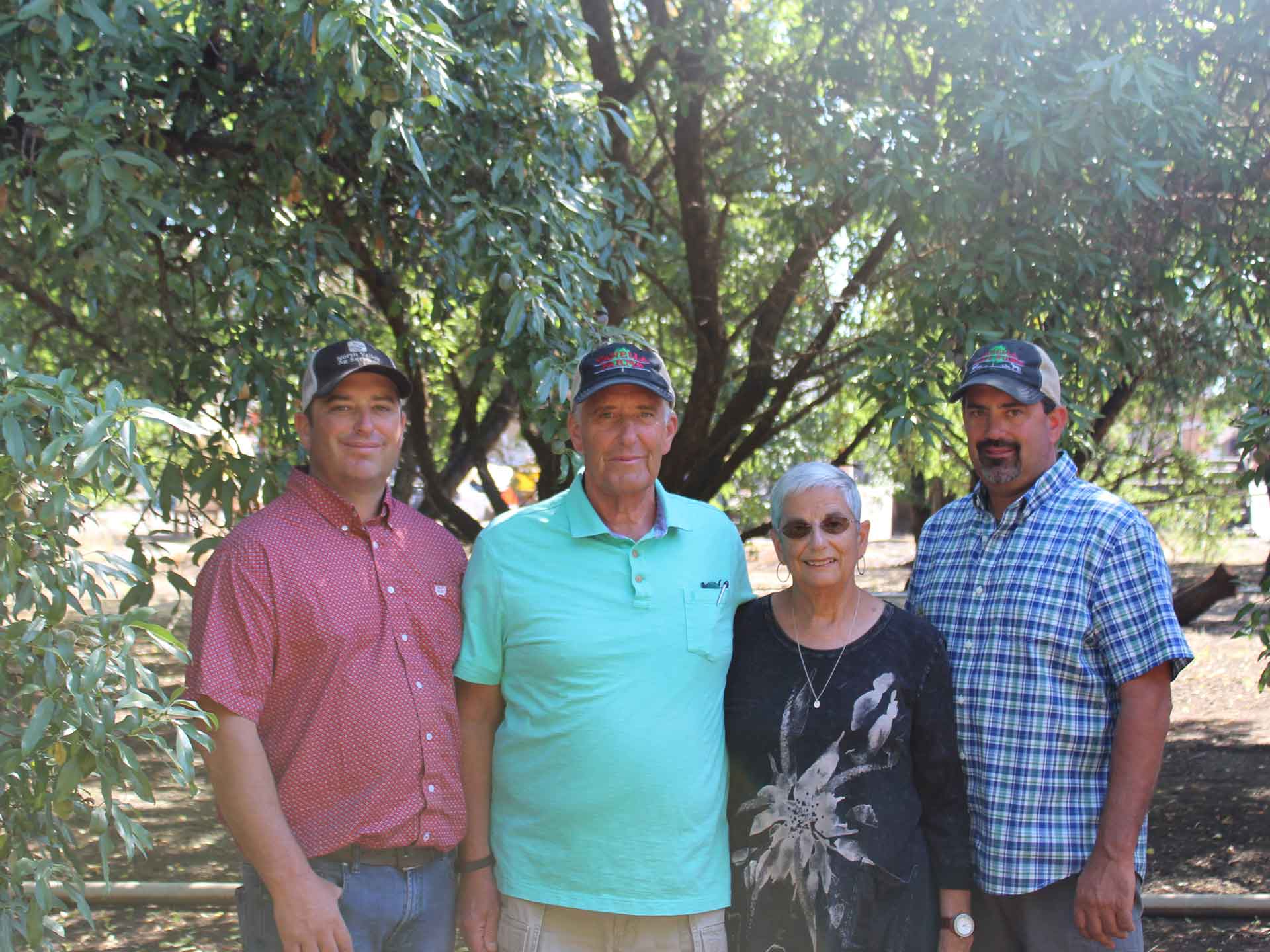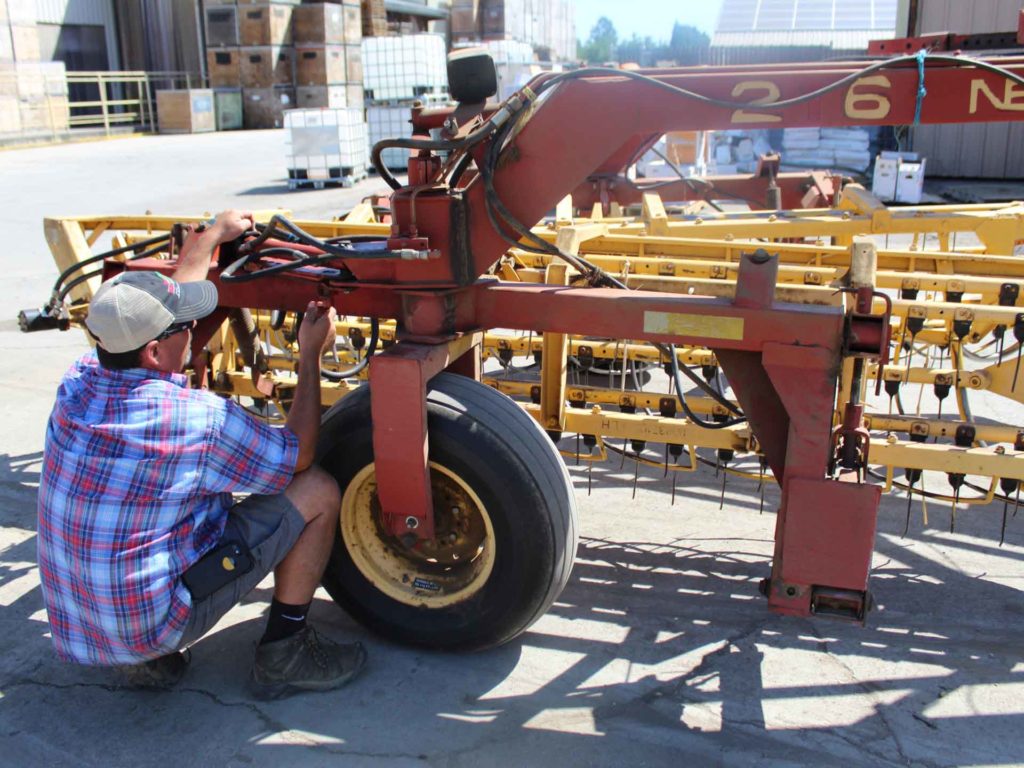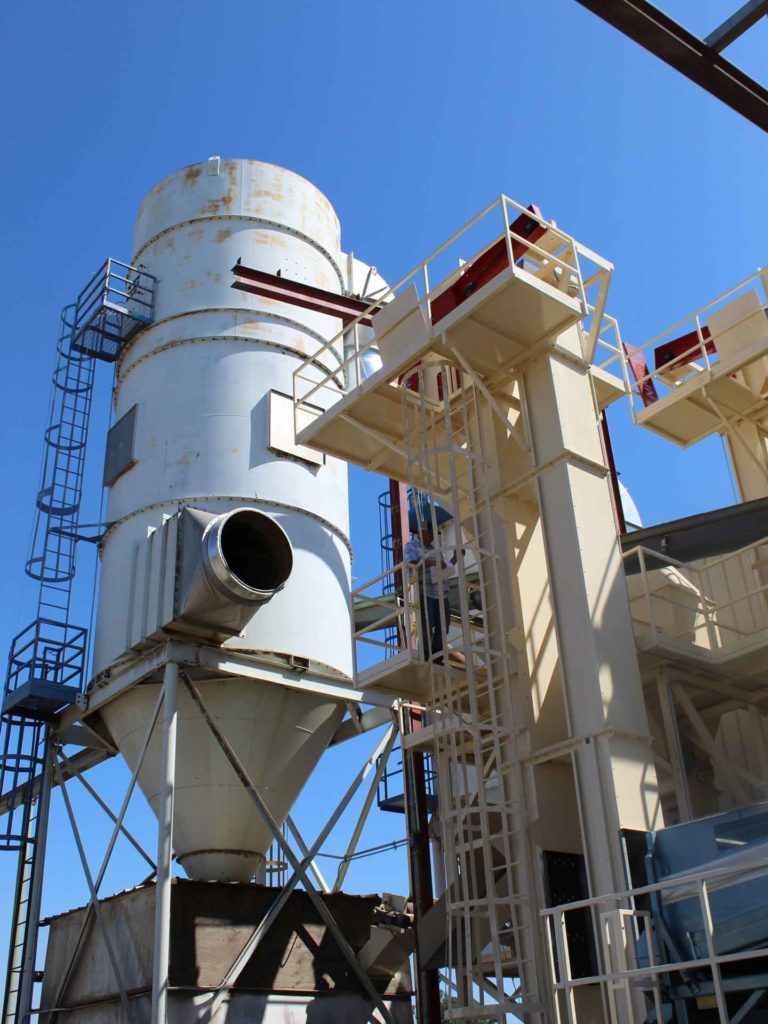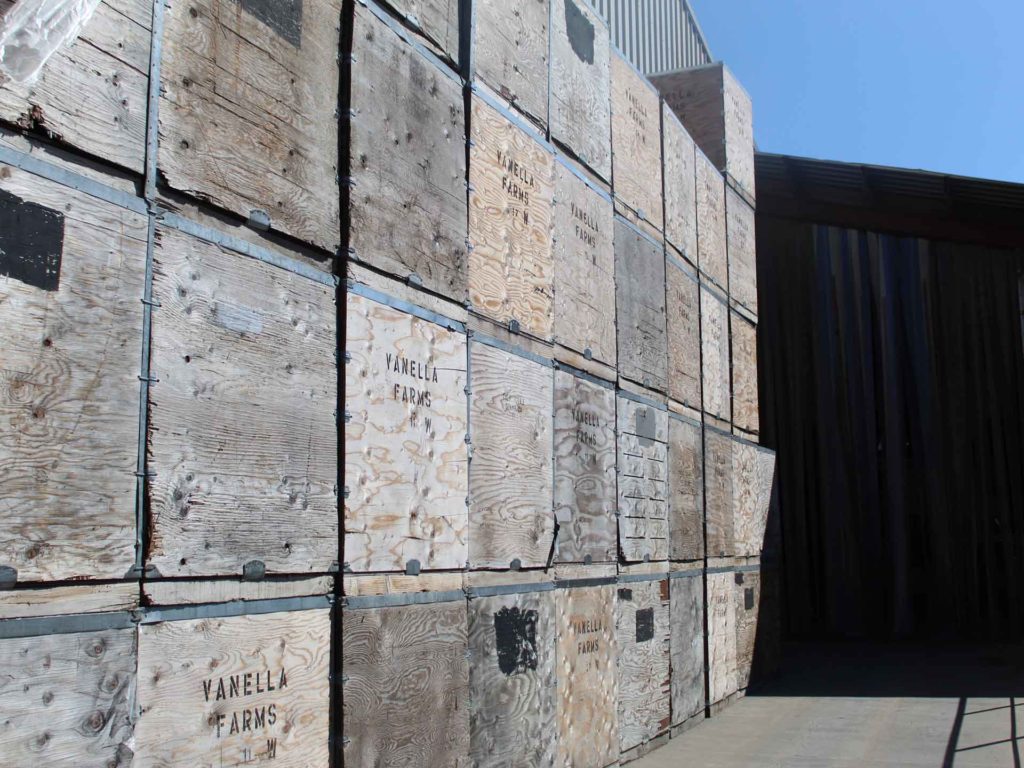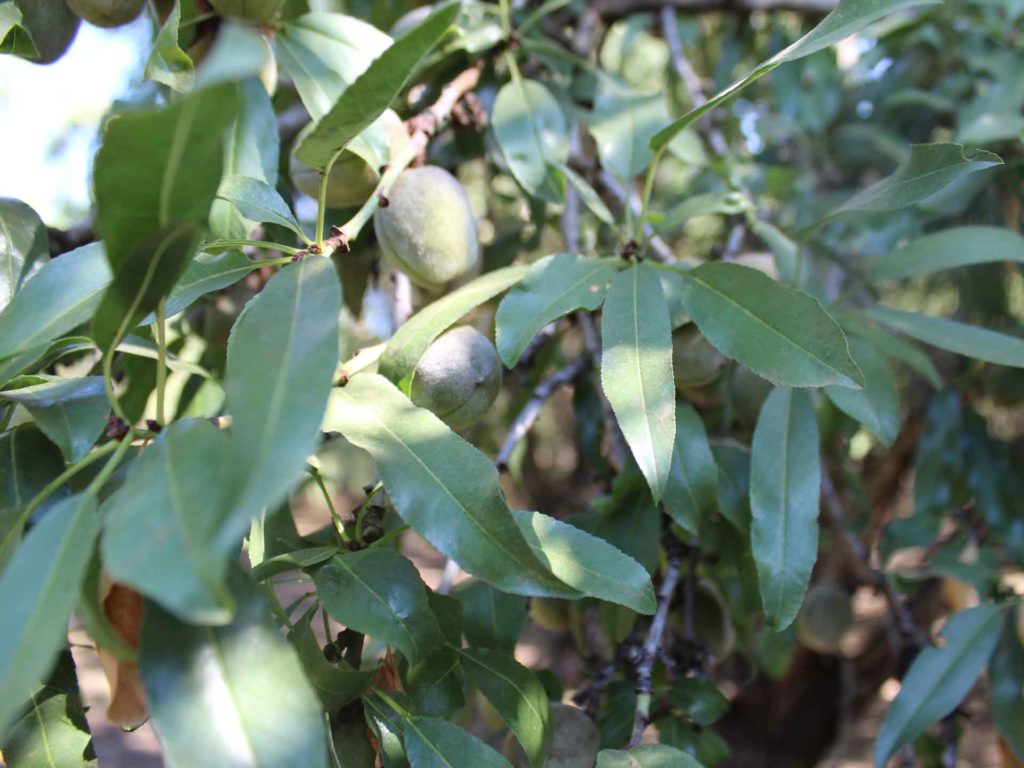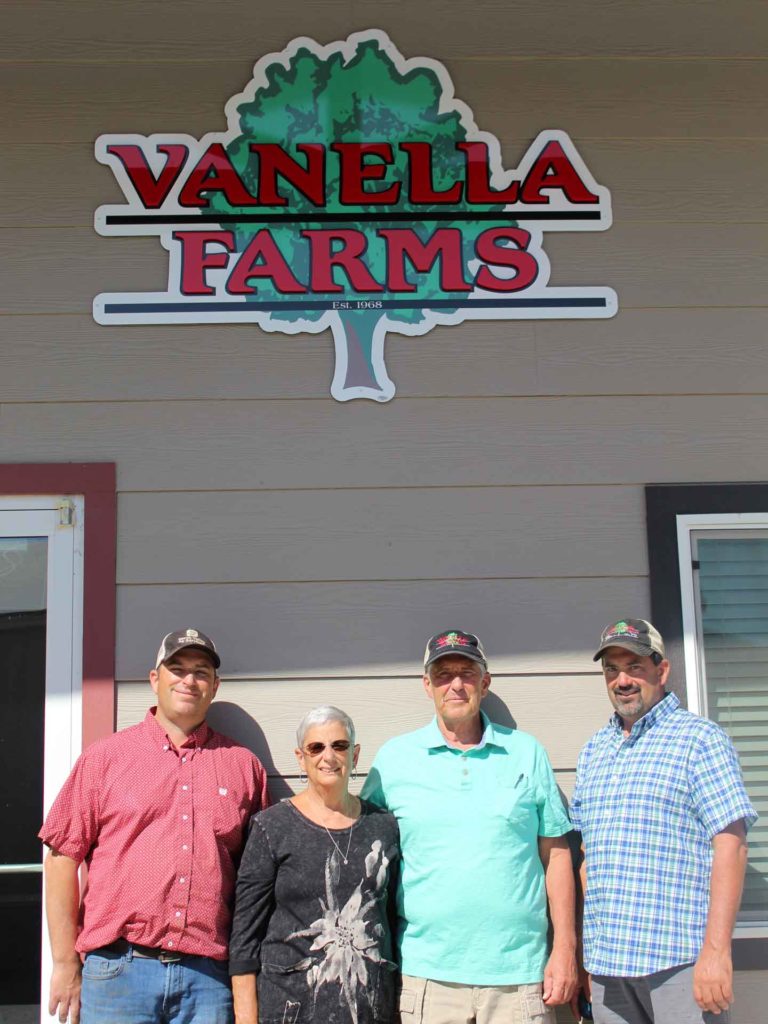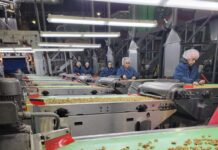In 1968, Bob Vanella bought ten acres in Chico, California. His son, Ryan Vanella recalls the story of when Bob came to look at the property with a house and a huller in the back. He had always wanted a huller. After he bought it, he went to tell his wife Sue, that he bought a huller with a little house in the front. She of course asked about the house. In which he replied “I don’t know, I didn’t look at the house. But there is a huller in the back”. Sue always knew Bob wanted to be a farmer, and from that 10 acres it all started.
Today, Bob and Sue farm with their two sons, Robert and Ryan. Robert mostly handling the walnut huller and harvesting while Ryan manages the almond huller and marketing. Together, they farm almonds, walnuts and diversified crops across the North State.
Vertically Integrated
Sue remembers they started farming by leasing orchards from a few neighbors and bought a shaker to be able to harvest as well. Bob’s father had an almond orchard down the street and the family wanted to be able to hull their own almonds. Over the years the family grew and their farm expanded. By the mid-1990’s when the price of almonds came to $.90 a pound, Bob and Sue made the decision to try marketing their own almonds. Sue recalls “we weren’t doing a great job and kept getting a lot of bad advice”. Their goal was to do as much themselves so they didn’t have to rely on other people. Bob and Sue were committed to being vertically integrated and knew it was the best thing for their farm and their family.
In the meantime, Ryan worked off the farm after college at another local almond farm and learned how the processing side of almonds worked. In 2001, Ryan came back to the family farm and they started doing all their own almond processing. “even today, we have never gone out and tried to get other business. The people we manage for or lease orchards from started sending us their product. As our other contracts were up, we just didn’t renew them and we started doing our own processing. We just started to all grow together. As farmers made more money, they started buying more property and we all grew our businesses together.”
“From that point we started to do everything ourselves. From planting an orchard, farming, management, harvesting, hulling, shelling, processing, exporting. That’s kind of been our business model. We don’t need to make all our money on just management or harvesting or hulling. If you can make a little bit on each step, everything ties together.” Ryan agrees he would rather be busy and keep everything moving. Even Bob stays busy on the tractor every day. He is in his happy place planting a new orchard, he doesn’t let his age stop him. “It’s his job to drive us crazy” adds Ryan.
Processing
Processing has changed over the years as Ryan recalls the early days. “No electronic eye, no sorters. Just a couple ladies on a picking belt and hand held sewing machines tying bags together. Stacking everything on the containers by hand. It would take five guys about an hour and a half to hand stack 900 bags on the shipping containers. As we’ve grown, we learned we can do it with forklifts and machines. Trying to minimize hand labor and be more efficient.”
Exports and Tarriffs
Today they are shipping almonds all over the country; China, Vietnam, India, Turkey, Europe, Russia, and South America just to name a few. Ryan says he does very little domestic business. “It is cheaper to ship export product. It costs $1,100-$1,200 to ship my product from Chico to the port. But then to go from the port to China is only $700. Our trucking costs are way more expensive than shipping costs. It is cheaper for me to ship across the world than across the country.” Ryan also explains most of their almonds are inshell, making up about 75 percent of their exports. He is shipping to other manufacturers who are getting a final consumer grade product.
Last year, Ryan says they shipped more almonds to Vietnam than he ever had before. “It was just a very slow process and delaying the number of loads from Vietnam into China. What would normally take 45-60 days to go from Port of Oakland to China was taking 70-90 days.” He is hopeful this year that more almonds will continue to ship, he just wishes the tariffs would work themselves out quicker. “They have a lot of demand, but will China pay the tariffs or continue to bring it in from other countries? Will their price be able to sustain that cost? There is a huge demand, they need more almonds. We just need to get the tariffs figured out.”
Ryan explains this isn’t anything new. “Even in the last five years, at least 65 percent of what has shipped to China has gone through Vietnam.” Shipping through brokers helps Ryan ship his product and cover some of the risk associated with shipping almonds and walnuts into difficult countries. The brokers can help alleviate when vendors don’t want to pay if they have an issue with the product, especially when the market goes down. Ryan says “Vendors rarely complain when the market goes up, but always complain when the market goes down. To have a broker, does cost a couple cents, but it helps manage risk in foreign countries.”
If something happens to a container, he still has to pay the grower. Vanella Farms is selling product mostly for growers who they at least to their hulling. He lets the growers decide how they want to get paid. They can sell it all before January or he will watch the market and sell throughout the year if that is what the grower wants. They can pick when they need the cash flow. Ryan says it is a good model they seem to like and still have control over their crop.
Ryan tries to pack and sell product all twelve months throughout the year. “I want to get the highs, get the lows and I also get the average. That is all I can ask. If I know the market looks good, I might sell more that month. But I want to be able to sell product every month and get a more stable average for pricing.” By August 1st, Ryan tries to have everything sold and shipped. They do want walnuts to sell sooner, and not keep them during the hot summer months.
Walnuts
The Vanella’s more recently started shipping walnuts just ten years ago. They expanded with a walnut huller and dryer in 2010, when their buyers realized they also farm walnuts. The customers were asking for them, so they started with a couple loads and went from there. They did about twenty loads one year, then fifty loads, the following year 100 loads and this year they will probably be about 200 loads.
Ryan explains “There were a lot of walnuts planted when the price hit $2 a pound. There aren’t enough facilities that can hull and dry the new crop coming off. We put in a new walnut huller just three years ago with the capacity to double it, and we already need to expand it. We just keep putting in more dryer bins every year”. Even with the walnut price being very low recently, farmers still need a place to dry their crop. Farmers aren’t ripping out their young orchards and in fact they are still planting walnuts. In a few years, there is going to be a lot more volume of walnuts coming and the Vanella’s hope to be able to expand with the new production.
Marketing Walnuts
While the demand for walnuts is there worldwide, the marketing still needs to catch up. Sue points out that almonds have an advantage in the Middle Eastern countries “almonds are more ceremonial, and are a high-status nut. Walnuts are sold for more health reasons to them.” Walnuts being grown in more countries, puts California growers in less of an advantage.
Ryan points out, last year when the California walnut crop was down the price was still low. “You don’t get that in almonds, when the crop is down the price is higher because they are at more of a demand. In walnuts, when the crop is down 15 percent and the price is down 20 percent that hurts all of us.” But Ryan is optimistic that walnuts will come back up in price, maybe not $2 a pound, but hopefully closer to $1 a pound.
Number One Concern—Safety
With so many factors and functions involved in getting an end product, the number one concern for Vanella Farms is safety. With all the employees required to run a successful family farm from the orchard to the export container, they are constantly ensuring a safe work environment for their employees. Ryan states “As we grow, we have more employees and now scattered over three counties. Even with monthly safety meetings, regular tailgate meetings, its still the first thing on my mind to keep everyone safe.”
With more regulations and agencies having to report to, they have also had to add more employees to keep up with the paperwork. “We have always handled that through our management services, but now we are having to hire more people to handle this level of paperwork that has nothing to do with farming. Walnuts are only making $.75-80 a pound and we are having to add these layers of paperwork and more employees to help with it. These employees aren’t adding more income. Ideally, we need the price up to help pay for it, but the buyers do not care if you have more regulations.”
Next Generation
The Vanella’s also have the next generation working on the farm now. Their next generation is starting as teenagers working in the summer. In the next ten years, they very well could be back on the farm in a manager type role. Ryan says “with or without the next generation, we have grown a lot over the past few years and we haven’t grown a lot in management roles. There is a lot of stages in our operation from orchards, management, hulling, packing, times two for almonds and walnuts. We will need more skilled managers.” Vanella Farms could look very different in the years to come, with more younger generations having more responsibilities and roles on the family business.
Sue adds “This has been a great way to raise a family. It is really neat as a grandma, to be able to see all my grandkids growing up together, being friends and possibly working together in the future. That’s what we do it for.”


